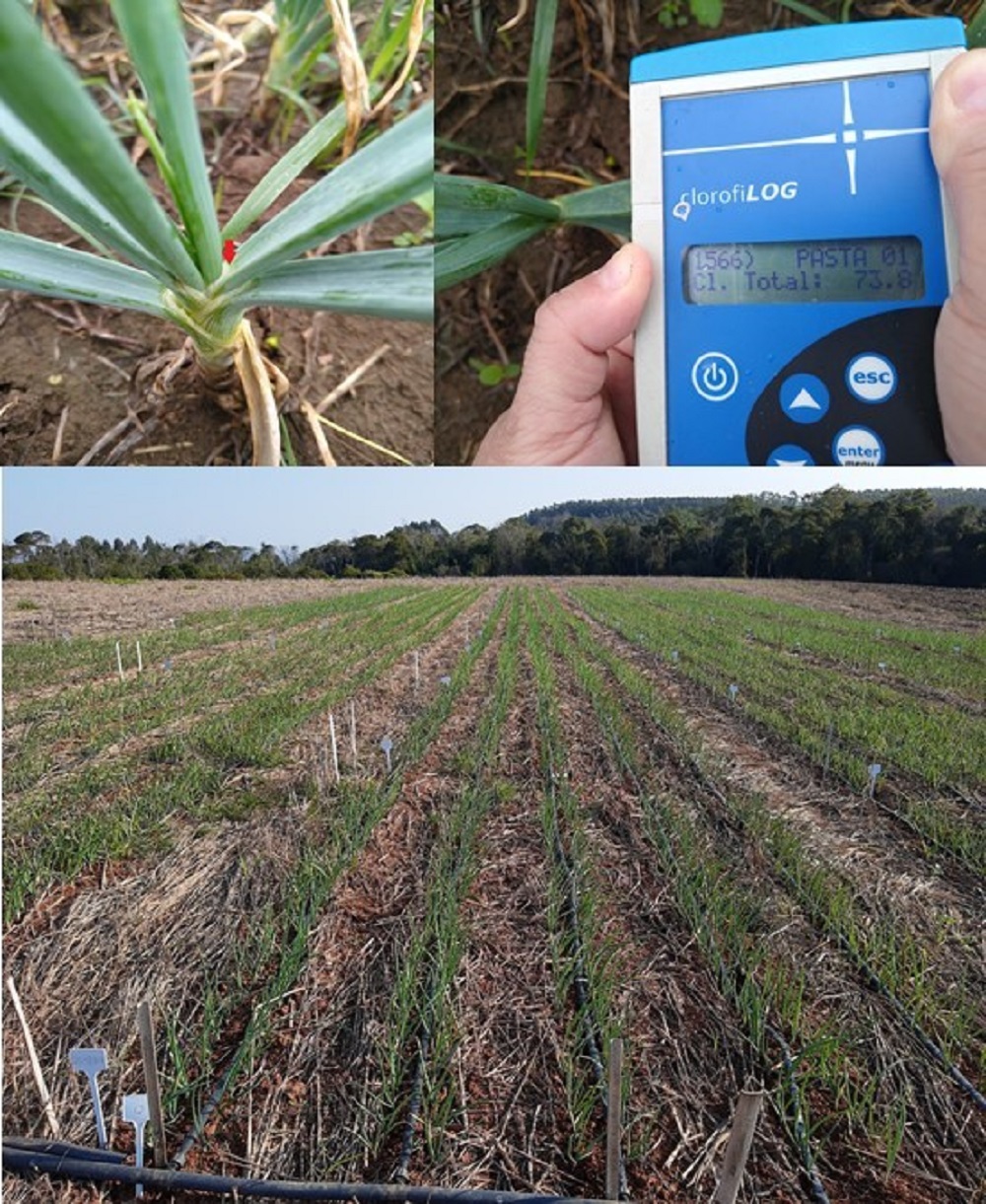CHLOROPHYLL INDEX AND FLOWERING OF FERTIGATED ONION UNDER INSTALLMENT OF NUTRIENTS AND PLANT DENSITIES
Abstract
Real-time nitrogen analysis using chlorophyll meters helps to diagnose and correct nutritional problems.
However, the simple reading of the chlorophyll indexes of the chlorophyll meters, without the proper
calibration and interpretation of the results for each species, precludes the indication of precise actions about
nitrogen fertilization by technicians. In this context, the relationship between nutrient splitting and population density on vegetative development (number of leaves), productivity, chlorophyll index, and onion flowering under fertigated no-tillage cultivation in Alto Vale do Itajaí, SC was analyzed. The tests were conducted in 2017, 2018, 2019, and 2020 in Ituporanga - SC. The treatments were four population densities (300, 400, 500 and 600 thousand plants ha-1) submitted to applications of nitrogen and potassium in weekly, fortnightly and monthly installments. The interpretation of chlorophyll indexes during the crop cycle should consider climatic conditions, plant density, and vegetative development without being influenced by nitrogen splitting. High temperatures, low relative humidity, and irregular rainfall accelerate vegetative development and bulbing and reduce productivity. During the growing cycle, under favorable weather conditions, weekly splitting increases the commercial productivity of class 3 bulbs and of those above class 3. Under less favorable climatic conditions, the increase in plant density contributes to an increase in commercial productivity and of class 2 bulbs. The increase in plant density reduces the chlorophyll content, and from 500,000 plants onwards, it reduces the number of leaves, increases class 2 bulbs, and reduces class 3 bulbs and those from classes above. Nutrient splitting and plant density do not interfere with the flowering of onion bulbs.

Copyright (c) 2022 AGRI-ENVIRONMENTAL SCIENCES

This work is licensed under a Creative Commons Attribution-NonCommercial-NoDerivatives 4.0 International License.
Copyright
Upon acceptance of a manuscript, authors will be asked to complete an "exclusive license" form that will allow the manuscript to be disclosed in the form of open access. In order to do the work of publishing and disseminating the research paper manuscript we need the rights to publish. For open access manuscripts, we use an exclusive licensing agreement where authors retain copyright from their manuscript.
In this agreement the authors retain rights to:
-Patents and other intellectual property rights in manuscript
-The right to credit for published work









